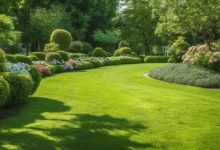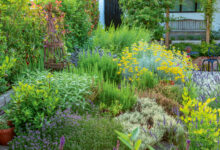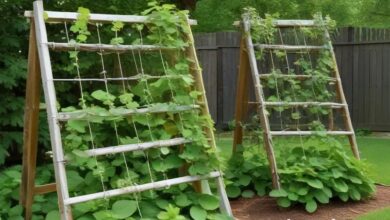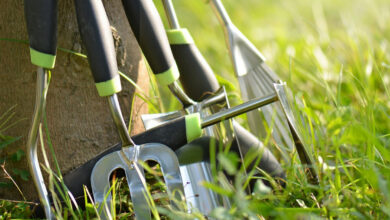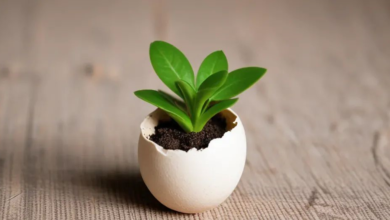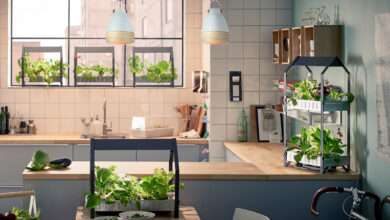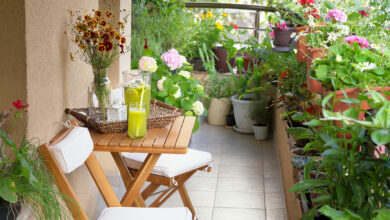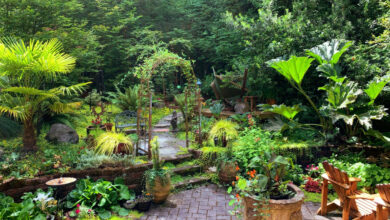Vertical Gardening Ideas for Apartment Balconies and Small Yards
SEO Meta Description: Transform small spaces with vertical gardening ideas for balconies and yards. Discover space-saving techniques, plant.
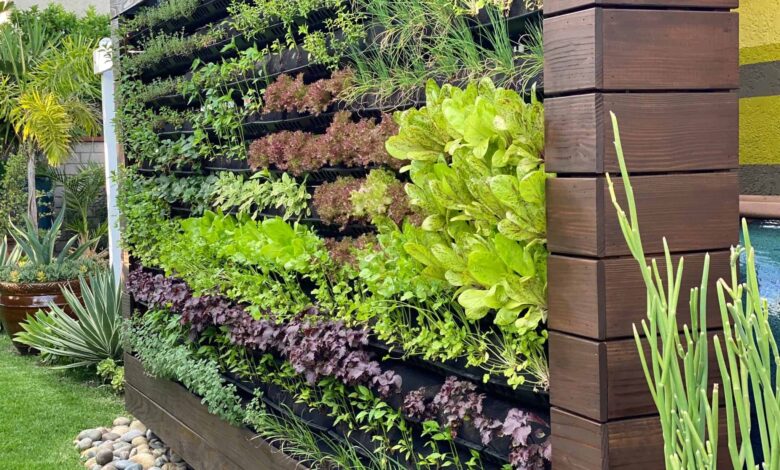
Living in apartments or homes with limited outdoor space no longer means sacrificing your gardening aspirations. Vertical gardening has emerged as the ultimate solution for urban dwellers, transforming walls, railings, and vertical surfaces into flourishing green sanctuaries. This innovative approach allows you to grow upward instead of outward, creating abundant gardens in spaces where traditional horizontal gardening simply isn’t feasible.
Apartment balconies and small yards present unique challenges that vertical growing systems elegantly solve. By utilizing vertical dimensions, you can multiply your available growing area several times over without consuming precious floor space. Whether you’re dealing with a narrow balcony, a tiny patio, or a compact backyard, vertical garden systems offer practical, attractive solutions that combine functionality with visual appeal.
The versatility of vertical gardening extends far beyond basic space-saving. These systems improve air circulation around plants, reduce pest problems, make maintenance more ergonomic by positioning plants at comfortable working heights, and create stunning living walls that enhance property aesthetics. For renters concerned about permanent modifications, many vertical solutions are temporary and portable, allowing you to take your garden with you when you move.
Modern container gardening techniques integrated with vertical methods enable apartment residents to harvest impressive yields of fresh herbs, salad greens, tomatoes, peppers, and even strawberries from minimal footprints. The accessibility factor proves invaluable—no more bending or kneeling, as plants grow at eye level or within easy reach. This ergonomic advantage makes gardening enjoyable for people of all ages and physical abilities.
As urban populations grow and outdoor space becomes increasingly scarce, vertical planting represents not just a gardening trend but a necessary evolution in how we cultivate plants in cities. Throughout this comprehensive guide, you’ll discover various vertical garden ideas, learn which plants thrive in elevated systems, explore DIY construction projects, and master maintenance techniques that ensure your small space garden flourishes season after season. Whether you’re a seasoned gardener adapting to urban constraints or a complete beginner seeking fresh herbs and vegetables, vertical gardening provides accessible, rewarding pathways to cultivation success.
Vertical Gardening: Benefits and Applications
Vertical gardening fundamentally reimagines cultivation by utilizing vertical surfaces and structures rather than relying solely on horizontal ground space. This technique encompasses everything from wall-mounted planters and hanging baskets to tower systems, trellises, and elaborate living walls that cover entire surfaces with vegetation.
The primary advantage of vertical garden design is obvious yet transformative: maximizing limited space. When floor area is scarce, growing upward multiplies your planting capacity exponentially. A single six-foot-tall wall can accommodate 30-40 plants in vertical arrangements, whereas the same floor space might hold only three or four traditional containers. This efficiency makes vertical systems essential for balcony gardens where every square foot matters.
Beyond space optimization, vertical gardening systems deliver numerous practical benefits. Elevated plants enjoy better air circulation, which reduces fungal diseases and mildew problems common in ground-level gardens. Pests like slugs and snails can’t reach elevated planters easily, naturally protecting your crops. The ergonomic positioning eliminates back strain from bending, making garden maintenance more comfortable and sustainable long-term.
Urban gardening practitioners appreciate how vertical structures serve multiple functions simultaneously. A green wall doesn’t just produce food—it provides insulation, moderates temperature through evapotranspiration, filters airborne pollutants, dampens street noise, and creates privacy screening. These environmental benefits prove particularly valuable in dense urban settings where green infrastructure is limited but desperately needed.
For apartment balconies specifically, vertical solutions overcome restrictions on permanent modifications. Freestanding towers, hanging systems, and structures that lean against walls provide substantial growing capacity without drilling, nailing, or permanently altering rental properties. This flexibility allows tenants to garden freely without risking security deposits.
The aesthetic transformation that vertical planting creates cannot be overstated. Bare walls, chain-link fences, and plain railings become living canvases that change with seasons and growth patterns. Thoughtfully designed vertical gardens enhance property values while creating inviting outdoor rooms that feel spacious despite their compact dimensions.
Essential Vertical Garden Structures for Small Spaces
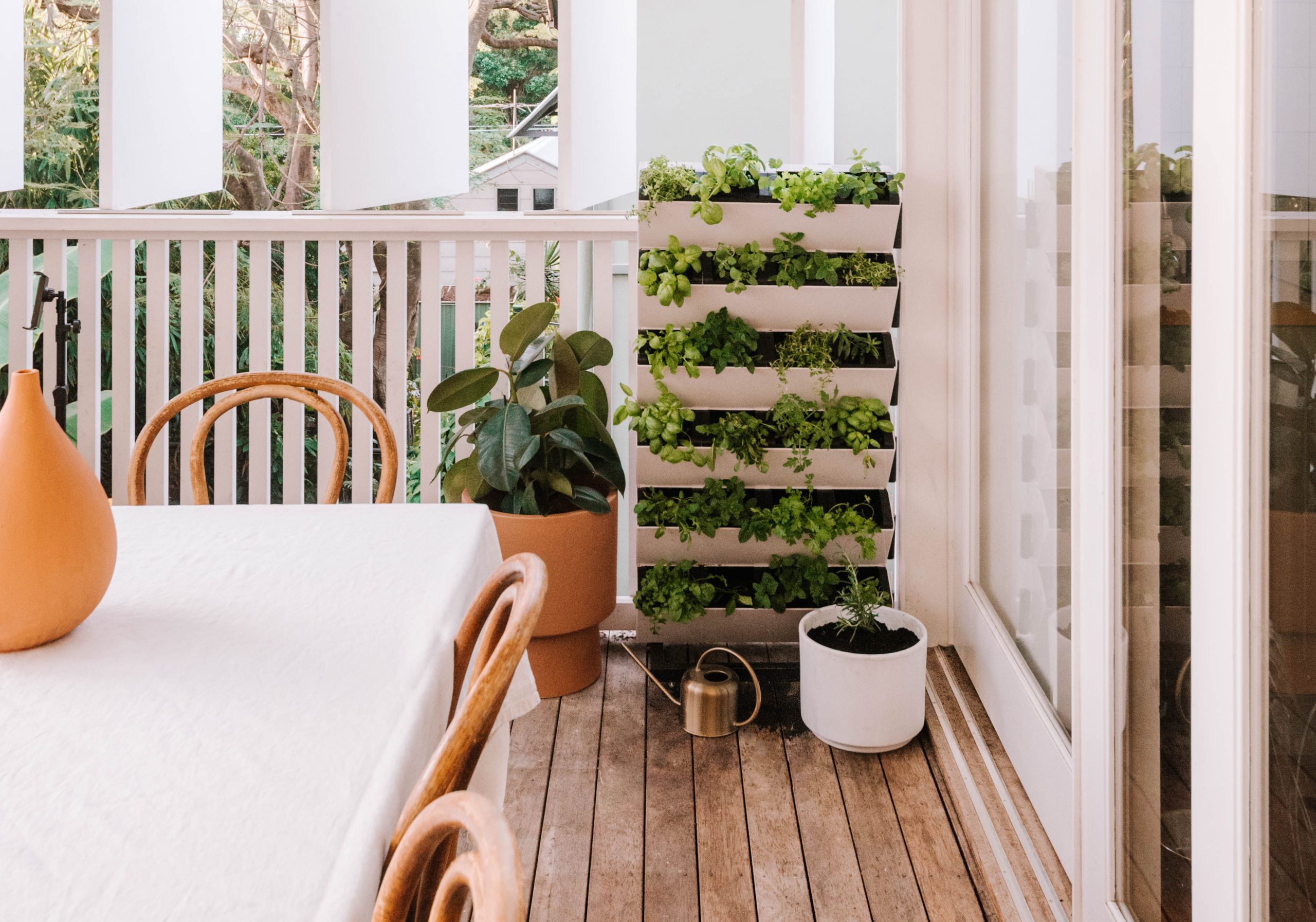
Selecting appropriate structures forms the foundation of successful vertical gardening. The variety of available systems ensures you’ll find options matching your budget, skill level, and space constraints while providing optimal growing conditions.
Wall-Mounted Planters and Modular Systems
Wall planters range from simple individual containers with mounting brackets to sophisticated modular panels with integrated irrigation. Felt pocket systems have gained tremendous popularity—these fabric walls feature multiple pockets holding soil and plants while allowing excess water to drain naturally. Their lightweight construction makes them ideal for apartment balcony installations.
Wooden planter boxes mounted on walls provide rustic charm and durability. Cedar and redwood resist rot naturally, making them excellent long-term investments for outdoor spaces. Metal wall planters made from galvanized steel or powder-coated aluminum deliver contemporary styling with exceptional longevity. When installing wall-mounted systems, always verify your wall’s load-bearing capacity and use appropriate anchors.
Modular panel designs offer expandability—start with one panel and add more as your confidence grows. Many contemporary systems incorporate self-watering reservoirs or drip irrigation compatibility, dramatically reducing maintenance while ensuring consistent moisture delivery.
Trellises and Vertical Supports
Trellises provide essential support for vining plants that naturally climb or can be trained upward. Materials vary from bamboo stakes and wooden lattice to metal grids and modern cable systems. Match trellis strength to plant weight—lightweight annual flowers need minimal support, while heavy crops like cucumbers or melons require robust structures.
Freestanding A-frame or obelisk-style trellises work perfectly for small yards and balconies where wall mounting isn’t feasible. These portable options provide stability without requiring hardware installation, making them ideal for renters. Expandable metal trellises adjust as plants grow, while cattle panel sections offer industrial-strength support for heavy vegetable crops.
Hanging Planters and Tower Gardens
- Hanging baskets maximize overhead space that would otherwise remain unused. Traditional wire baskets lined with coconut coir provide excellent drainage, though they require frequent watering. Self-watering hanging pots with built-in reservoirs reduce maintenance while delivering space-saving benefits.
- Tower gardens represent self-contained vertical gardening systems perfect for small spaces. These columnar structures stack multiple planting pockets vertically around central irrigation tubes. Commercial aeroponic towers can produce impressive yields in minimal footprints, while DIY versions constructed from stacked pots or modified PVC pipes offer budget-friendly alternatives. Pyramid planters provide similar vertical efficiency with stepped tiers cascading downward. These work exceptionally well for herb gardens, positioning aromatic plants at various heights for convenient harvesting.
DIY Pallet Gardens
Repurposed wooden pallets have become iconic in DIY vertical gardening. After cleaning and preparing (choose heat-treated “HT” stamped pallets), attach landscape fabric to create planting pockets, fill with soil, and position plants between slats. These lean-and-grow systems require no complicated installation while providing a substantial planting area. Paint pallets in colors that complement your outdoor décor to transform utilitarian materials into attractive garden features. Pallet gardens work beautifully for shallow-rooted crops like lettuce, herbs, and strawberries.
Shelving and Ladder Systems
Garden shelving and ladder planters offer simple vertical gardening solutions requiring minimal construction skills. Tiered shelving creates graduated displays, maximizing light exposure for all plants. Vintage wooden ladders repurposed as plant stands add rustic charm while organizing container gardens efficiently.
Wheeled garden carts add mobility, letting you relocate plants to follow sunlight or protect them from harsh weather—particularly valuable for apartment balconies with varying sun exposure throughout the day.
Best Plants for Vertical Gardens
Selecting appropriate plants ensures vertical gardening success. Not all species thrive in confined root spaces and specific light conditions typical of vertical systems.
Herbs: Perfect Vertical Garden Candidates
Herbs excel in vertical gardens, offering compact growth, culinary utility, and aromatic appeal. Basil thrives in wall planters and hanging baskets, producing abundant harvests from small spaces. Multiple varieties—sweet, purple, Thai, and lemon basil—create visually interesting plantings with diverse flavors.
Parsley, cilantro, chives, and mint adapt beautifully to vertical planters. Mediterranean herbs like oregano, thyme, and rosemary tolerate drier conditions sometimes present in elevated containers. Compact rosemary varieties like “Blue Boy” suit small spaces, while trailing types create dramatic cascading effects in hanging positions.
Mint’s aggressive spreading makes contained vertical systems ideal for preventing invasive behavior while keeping fresh leaves accessible. The containment naturally controls mint while its vigorous growth ensures abundant harvests.
Vegetables for Vertical Growing
- Tomatoes represent the most desired vertical garden vegetable. Determinate (bush) varieties like “Tiny Tim,” “Patio,” and “Window Box Roma” were specifically bred for container growing and vertical arrangements. These compact plants produce impressive yields without overwhelming small balconies.
- Peppers, both sweet and hot varieties, adapt excellently to vertical containers. Their upright growth and ornamental qualities make them attractive additions. Compact varieties like “Lunchbox” peppers and “Thai Dragon” hot peppers remain appropriately sized for vertical gardening systems while producing substantial harvests.
Leafy greens, including lettuce, spinach, arugula, and kale, thrive in vertical arrangements. Their shallow root systems and rapid growth suit the limited soil volumes of elevated planters. Loose-leaf lettuce varieties allow continuous harvest by picking outer leaves while inner leaves keep growing.
Bush beans produce well in containers without requiring extensive support. However, pole beans trained up trellises can be incredibly productive when vertical space exceeds horizontal space. Cucumbers bred for containers like “Spacemaster” remain compact, while climbing varieties trained vertically maximize small footprints.
Flowers and Ornamental Plants
- Petunias, trailing nasturtiums, and calibrachoas cascade beautifully from elevated planters, creating waterfalls of color. These “spiller” plants work perfectly in upper tiers where their trailing growth softens structural edges. Fuchsias excel in partially shaded vertical gardens, their pendulous jewel-toned flowers creating elegant displays.
- Succulents adapt remarkably well to vertical growing, particularly in felt pocket systems or specialized frames. Their minimal root systems and drought tolerance suit the challenging moisture conditions of vertical walls. Succulent living walls create stunning architectural features requiring infrequent watering.
Climbing Plants and Vines
Climbing plants embody vertical gardening’s essence, naturally growing upward with minimal training. Morning glories, sweet peas, and scarlet runner beans cover vertical structures quickly with spectacular flowers. These annual vines suit temporary features or rental situations where permanent plantings aren’t desirable.
Clematis varieties offer stunning flowering displays when trained up trellises. Choose compact varieties for small spaces and provide the “cool roots, warm tops” conditions these plants prefer by shading their base while stems reach sunlight.
DIY Vertical Garden Projects
Creating custom vertical gardens through DIY projects allows personalization while controlling costs. These projects suit various skill levels and work specifically for apartment balcony constraints.
Mason Jar Herb Garden
This beginner-friendly project requires minimal materials. Mount mason jars on wooden boards using pipe clamps, attach the board to walls or railings, fill jars with potting soil, and plant herbs. The transparent containers allow moisture monitoring while creating rustic-modern aesthetics perfect for small outdoor spaces.
Pallet Planter Wall
Transform heat-treated pallets into functional vertical garden walls. Sand rough areas, attach landscape fabric creating pockets, fill with potting soil, and plant between slats. Once established, lean vertically against walls. Paint pallets in complementary colors to match your balcony décor.
Rain Gutter Garden
Repurpose vinyl or aluminum gutters into sleek vertical planters. Mount gutters horizontally at different heights, drill drainage holes, fill with potting mix, and plant shallow-rooted crops. This system maximizes growing area while preserving valuable floor space—ideal for apartment balconies.
Shoe Organizer Garden
Over-the-door shoe organizers repurpose into intensive growing systems. Hang on railings or walls, cut drainage slits in pockets, fill with potting soil, and plant herbs or lettuce. This DIY vertical garden costs under $20 and provides up to 24 individual planting spaces.
PVC Pipe Tower
Create space-efficient towers using 4-6 inch PVC pipe. Cut to the desired height, drill planting holes around the circumference, insert a perforated irrigation pipe in the center, fill with potting soil, and plant in openings. This system excels for strawberries, lettuce, and herbs while occupying minimal footprints.
Light Requirements and Plant Selection
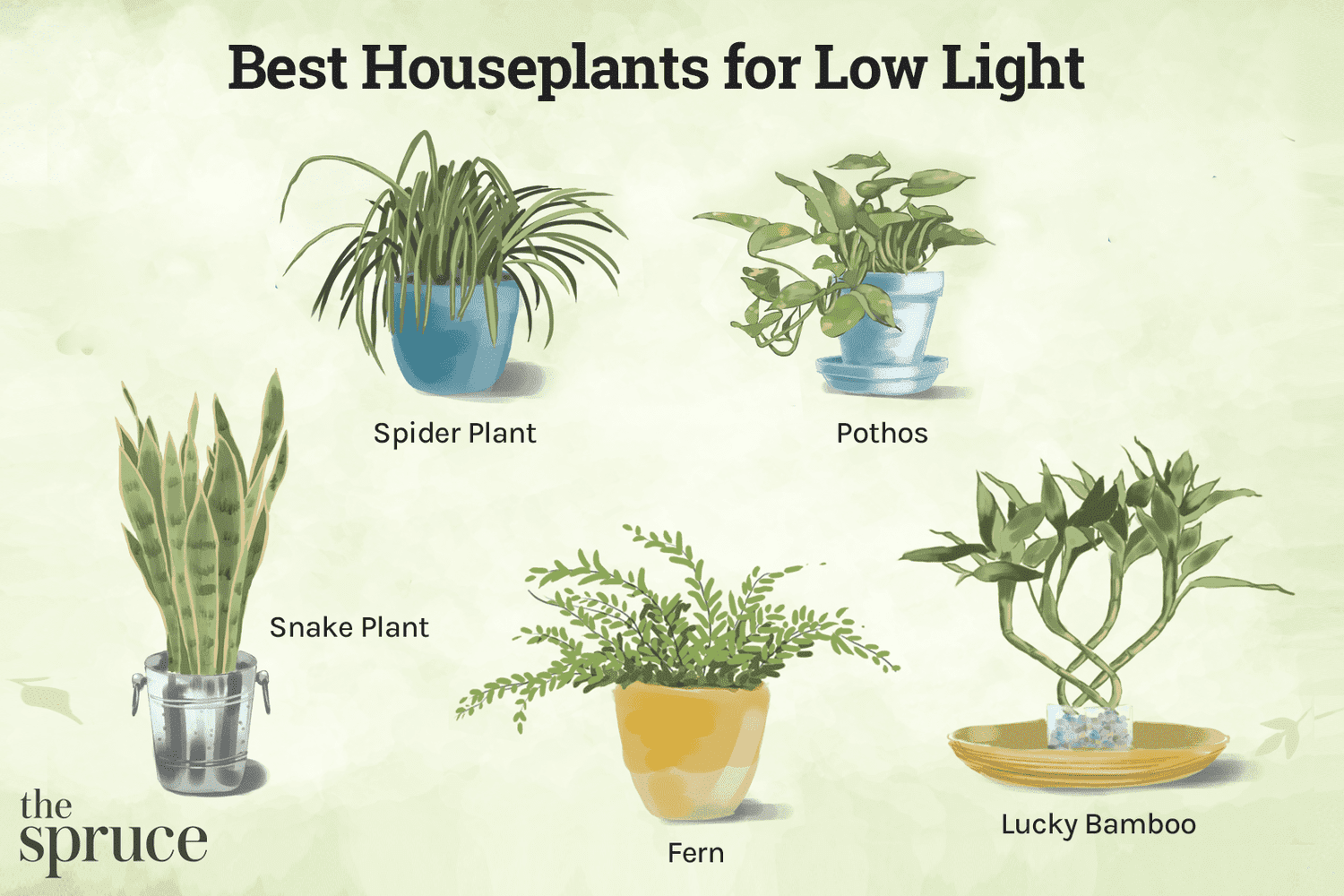
Light conditions shape vertical garden success more than any other factor. Apartment balconies present unique lighting challenges due to building orientations and overhangs.
Assessing Available Light
Full sun means six-plus hours of direct sunlight daily—essential for fruiting vegetables like tomatoes and peppers. Partial sun (3-6 hours) suits many herbs, leafy greens, and flowers. Full shade (under 3 hours) requires shade-tolerant species.
Balcony orientation dramatically affects light availability. South-facing balconies receive maximum sun, supporting the widest plant range. East-facing captures gentle morning sun, ideal for cool-season crops. West-facing receives intense afternoon sun that may require shade protection. North-facing balconies receive minimal direct sun, necessitating shade-tolerant choices.
Full Sun Plants
Sun-loving vegetables, including tomatoes, peppers, beans, and cucumbers, demand maximum light for proper fruit development. Mediterranean herbs like rosemary, oregano, and thyme require full sun and well-drained conditions found in elevated planters. Petunias, geraniums, and succulents flourish in hot, sunny vertical positions.
Partial Shade Options
Leafy greens, including lettuce, spinach, and arugula, prefer afternoon shade, preventing premature bolting. Herbs like parsley, cilantro, and mint tolerate partial shade. Shade-loving flowers, including fuchsias, impatiens, and begonias, create colorful displays in challenging light conditions.
Maximizing Available Light
Strategic positioning optimizes limited light. Place sun-demanding crops in brightest spots, reserving shadier areas for shade-tolerant species. White walls behind vertical gardens reflect sunlight, effectively increasing light exposure. Mobile systems can be relocated throughout the day to follow sun patterns.
Watering and Maintenance Essentials
Proper water management and maintenance determine vertical garden success. Elevated systems present unique challenges requiring adapted approaches.
Watering Strategies
Hand-watering remains simplest for small balcony gardens. Water thoroughly until draining from the container bottoms, ensuring complete saturation. Check moisture daily during hot weather—water when the top inch feels dry.
Drip irrigation systems automate watering for larger installations. Timer-controlled systems deliver consistent moisture without daily intervention. Self-watering containers incorporate reservoirs that wick moisture upward, dramatically reducing watering frequency. Wicking systems offer low-tech moisture regulation using cotton rope from water reservoirs into containers. This passive system maintains steady moisture without electricity—ideal for apartment balconies.
Fertilization Needs
Limited soil volumes in vertical containers deplete nutrients faster than traditional gardens. Slow-release granular fertilizers mixed into potting media provide steady nutrition for months. Liquid fertilizers applied during watering deliver immediate nutrients—dilute to half-strength and apply weekly. Organic options include fish emulsion, liquid kelp, or compost tea. Top-dress containers with compost mid-season, scratching it into the soil surfaces to release nutrients gradually.
Pest Management
Vertical gardening naturally reduces some pest pressures by elevating plants away from ground-dwelling insects. However, inspect regularly for early detection. Dislodge aphids and spider mites with strong water sprays. Insecticidal soaps or neem oil provide organic control for persistent problems. Prevent fungal diseases by ensuring adequate spacing for air circulation. Water at the soil level when possible, keeping foliage dry. Companion planting with marigolds, nasturtiums, and herbs deters pests naturally.
Seasonal Care and Budget Tips
Seasonal Maintenance
Spring involves inspecting structures for damage, refreshing potting media, and planting cool-season crops. Summer requires increased watering, mulching to conserve moisture, and providing shade protection during extreme heat. Fall transitions to cool-season crops while removing spent plants. Winter preparation includes draining irrigation systems, insulating containers, and storing sensitive items indoors.
Cost-Effective Solutions
Repurpose household items and thrift store finds into vertical garden components. Wooden pallets, ladders, gutters, and containers often cost nothing. Start plants from seed rather than purchasing transplants—seed packets provide dozens of plants for minimal investment. Propagate herbs from cuttings—basil, mint, and coleus root readily in water. Make homemade compost to reduce potting mix costs. Join community gardens for bulk purchasing opportunities and plant swaps with fellow gardeners.
More Read: Vertical Gardening Grow More in Less Space
Conclusion
Vertical gardening has revolutionized urban cultivation, transforming space limitations into opportunities for creative, productive growing. Whether working with apartment balconies or small yards, vertical techniques maximize every dimension, creating lush gardens where horizontal constraints would traditionally prevent meaningful cultivation. From simple hanging planters and repurposed pallets to sophisticated tower systems and living walls, options exist for every budget and skill level. Success requires your specific conditions—assessing light availability, selecting appropriate plants, implementing efficient irrigation, and maintaining systems seasonally.
The beauty of vertical gardens extends beyond practicality, creating living art that enhances well-being, provides fresh harvests, improves air quality, and transforms sterile spaces into vibrant sanctuaries. Start small with manageable projects that build confidence, then expand as experience grows. The rewards of fresh herbs within arm’s reach, homegrown vegetables from minimal footprints, and the satisfaction of nurturing life in unlikely places make every effort worthwhile, proving that abundant gardens aren’t reserved for those with sprawling properties but are achievable for anyone with vertical space and determination to grow.
